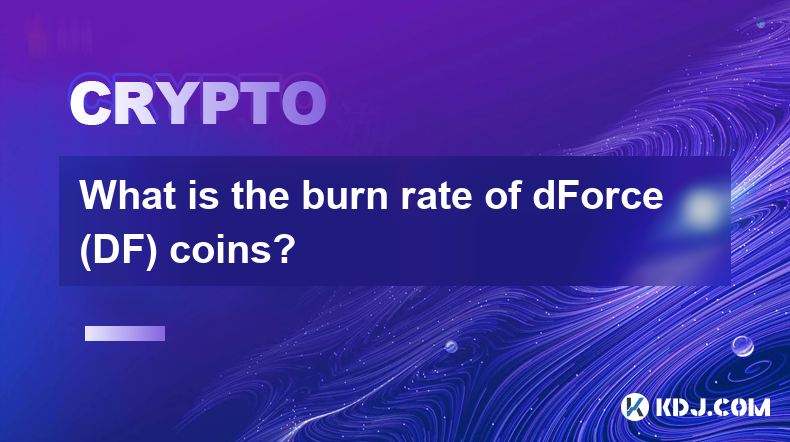-
 Bitcoin
Bitcoin $107,792.7836
-1.83% -
 Ethereum
Ethereum $2,490.3334
-3.99% -
 Tether USDt
Tether USDt $1.0003
0.00% -
 XRP
XRP $2.2177
-2.39% -
 BNB
BNB $652.5191
-1.50% -
 Solana
Solana $146.6253
-4.04% -
 USDC
USDC $1.0001
0.01% -
 TRON
TRON $0.2832
-1.14% -
 Dogecoin
Dogecoin $0.1623
-5.82% -
 Cardano
Cardano $0.5701
-5.05% -
 Hyperliquid
Hyperliquid $38.6009
-4.85% -
 Sui
Sui $2.8604
-5.95% -
 Bitcoin Cash
Bitcoin Cash $487.6897
-2.30% -
 Chainlink
Chainlink $13.0565
-5.05% -
 UNUS SED LEO
UNUS SED LEO $9.0735
0.43% -
 Avalanche
Avalanche $17.6635
-5.16% -
 Stellar
Stellar $0.2382
-2.81% -
 Toncoin
Toncoin $2.7498
-4.12% -
 Shiba Inu
Shiba Inu $0.0...01134
-4.91% -
 Litecoin
Litecoin $86.4080
-3.46% -
 Hedera
Hedera $0.1526
-4.69% -
 Monero
Monero $313.9315
-1.80% -
 Dai
Dai $1.0000
0.00% -
 Polkadot
Polkadot $3.3426
-5.85% -
 Ethena USDe
Ethena USDe $1.0001
-0.02% -
 Bitget Token
Bitget Token $4.4044
-3.80% -
 Uniswap
Uniswap $6.9000
-9.33% -
 Pepe
Pepe $0.0...09552
-5.65% -
 Aave
Aave $263.0698
-6.29% -
 Pi
Pi $0.4693
-4.76%
What is the burn rate of dForce (DF) coins?
The burn rate of a cryptocurrency, like dForce (DF) coins, is influenced by protocol design, supply and demand dynamics, and community involvement, potentially affecting its price and market cap.
Jan 07, 2025 at 03:38 pm

Key Points
- Burn rate concept and metrics
- Factors influencing burn rate
- Historical burn rate data for dForce (DF) coins
- Consequences of high burn rate
- Plans to manage burn rate
- Impact of burn rate on coin value
- FAQs: Burn rate
Delving into dForce (DF) Coin Burn Rate
1. Burn Rate Concept and Metrics
Burn rate refers to the rate at which a cryptocurrency's circulating supply is reduced through a process known as burning. Burning permanently removes coins from circulation, effectively reducing the total supply and influencing its price and market cap. Measuring burn rate involves calculating the ratio of coins burned to the total supply over a specific time period.
2. Factors Influencing Burn Rate
The burn rate of a cryptocurrency is primarily determined by:
- Protocol Design: Blockchain protocols tailorburn mechanisms to achieve specific goals, such as scarcity or inflation control.
- Supply and Demand: High demand can create upward pressure on prices, leading to increased burning if coins are acquired and burned by projects or individuals.
- Community Involvement: Holder sentiments and community consensus can influence burn decisions, leading to accelerated or decreased rates.
3. Historical Burn Rate Data for dForce (DF) Coins
dForce has implemented a burn mechanism that effectively removes a portion of DF coins from circulation, aiming to reduce supply and potentially influence coin value. The actual burn rate has fluctuated over time, influenced by market conditions and protocol updates. Historical data can be tracked through blockchain explorers or official project announcements.
4. Consequences of High Burn Rate
A high burn rate can have several effects:
- Scarcity: Burning reduces the total supply, potentially increasing scarcity and desirability.
- Volatility: Burning can impact liquidity and price stability, leading to increased volatility.
- Deflationary Pressure: Reduced supply may create a deflationary bias, potentially influencing coin value over the long term.
5. Plans to Manage Burn Rate
Project teams can adopt various strategies to manage burn rate, including:
- Fixed Burn Schedule: Establishing a consistent burn pattern prevents drastic rate fluctuations and provides market predictability.
- Transaction-Based Burning: Linking burns to platform or dApp usage can incentivize participation and reduce circulating supply.
- Community Voting: Allowing stakeholders to vote on burning proposals ensures a transparent and democratic approach.
6. Impact of Burn Rate on Coin Value
Burn rate can influence coin value through:
- Supply and Demand: Reducing supply can potentially increase demand and support price appreciation.
- Community Confidence: A well-managed burn rate can boost community confidence in the project's long-term growth potential.
- Market Cycle: Market conditions and sentiment can impact the significance of burn rate, affecting its influence on coin value.
FAQs: Burn Rate
Q: What factors can cause a burn rate to fluctuate?
A: Supply and demand dynamics, protocol changes, and community decisions can all contribute to fluctuations in burn rate.
Q: How is burn rate calculated?
A: Burn rate is calculated as the ratio of coins burned to the total supply over a specific time period.
Q: Why do cryptocurrency projects implement burn mechanisms?
A: Burn mechanisms aim to reduce supply, control inflation, and enhance coin value by increasing scarcity.
Q: Can a high burn rate have negative consequences?
A: Yes, a high burn rate can lead to reduced liquidity, increased volatility, and deflationary pressure.
Q: How do project teams manage burn rate over time?
A: Fixed burn schedules, transaction-based burning, and community voting mechanisms are strategies used to manage burn rate.
Disclaimer:info@kdj.com
The information provided is not trading advice. kdj.com does not assume any responsibility for any investments made based on the information provided in this article. Cryptocurrencies are highly volatile and it is highly recommended that you invest with caution after thorough research!
If you believe that the content used on this website infringes your copyright, please contact us immediately (info@kdj.com) and we will delete it promptly.
- Bitcoin's Pattern Break: Are HODLers the Key to the Next Surge?
- 2025-07-04 18:50:12
- Bitcoin Price, Trump's Bill, and the $150K Dream: A NYC Take
- 2025-07-04 19:50:12
- Ethereum, LILPEPE, and the July Bounce: Will Pepe Steal ETH's Thunder?
- 2025-07-04 19:10:12
- Binance Institutional Loans: Unlocking 4x Leverage and Zero Interest for Whales
- 2025-07-04 19:15:12
- Bitcoin Bull Run: Analysts Eye Peak in Late 2025?
- 2025-07-04 19:20:13
- Pepe Indicators, Bullish Forecast: Can the Meme Coin Rally?
- 2025-07-04 19:25:12
Related knowledge

How to customize USDT TRC20 mining fees? Flexible adjustment tutorial
Jun 13,2025 at 01:42am
Understanding USDT TRC20 Mining FeesMining fees on the TRON (TRC20) network are essential for processing transactions. Unlike Bitcoin or Ethereum, where miners directly validate transactions, TRON uses a delegated proof-of-stake (DPoS) mechanism. However, users still need to pay bandwidth and energy fees, which are collectively referred to as 'mining fe...

USDT TRC20 transaction is stuck? Solution summary
Jun 14,2025 at 11:15pm
Understanding USDT TRC20 TransactionsWhen users mention that a USDT TRC20 transaction is stuck, they typically refer to a situation where the transfer of Tether (USDT) on the TRON blockchain has not been confirmed for an extended period. This issue may arise due to various reasons such as network congestion, insufficient transaction fees, or wallet-rela...

How to cancel USDT TRC20 unconfirmed transactions? Operation guide
Jun 13,2025 at 11:01pm
Understanding USDT TRC20 Unconfirmed TransactionsWhen dealing with USDT TRC20 transactions, it’s crucial to understand what an unconfirmed transaction means. An unconfirmed transaction is one that has been broadcasted to the blockchain network but hasn’t yet been included in a block. This typically occurs due to low transaction fees or network congestio...

How to check USDT TRC20 balance? Introduction to multiple query methods
Jun 21,2025 at 02:42am
Understanding USDT TRC20 and Its ImportanceUSDT (Tether) is one of the most widely used stablecoins in the cryptocurrency market. It exists on multiple blockchain networks, including TRC20, which operates on the Tron (TRX) network. Checking your USDT TRC20 balance accurately is crucial for users who hold or transact with this asset. Whether you're sendi...

What to do if USDT TRC20 transfers are congested? Speed up trading skills
Jun 13,2025 at 09:56am
Understanding USDT TRC20 Transfer CongestionWhen transferring USDT TRC20, users may occasionally experience delays or congestion. This typically occurs due to network overload on the TRON blockchain, which hosts the TRC20 version of Tether. Unlike the ERC20 variant (which runs on Ethereum), TRC20 transactions are generally faster and cheaper, but during...

The relationship between USDT TRC20 and TRON chain: technical background analysis
Jun 12,2025 at 01:28pm
What is USDT TRC20?USDT TRC20 refers to the Tether (USDT) token issued on the TRON blockchain using the TRC-20 standard. Unlike the more commonly known ERC-20 version of USDT (which runs on Ethereum), the TRC-20 variant leverages the TRON network's infrastructure for faster and cheaper transactions. The emergence of this version came as part of Tether’s...

How to customize USDT TRC20 mining fees? Flexible adjustment tutorial
Jun 13,2025 at 01:42am
Understanding USDT TRC20 Mining FeesMining fees on the TRON (TRC20) network are essential for processing transactions. Unlike Bitcoin or Ethereum, where miners directly validate transactions, TRON uses a delegated proof-of-stake (DPoS) mechanism. However, users still need to pay bandwidth and energy fees, which are collectively referred to as 'mining fe...

USDT TRC20 transaction is stuck? Solution summary
Jun 14,2025 at 11:15pm
Understanding USDT TRC20 TransactionsWhen users mention that a USDT TRC20 transaction is stuck, they typically refer to a situation where the transfer of Tether (USDT) on the TRON blockchain has not been confirmed for an extended period. This issue may arise due to various reasons such as network congestion, insufficient transaction fees, or wallet-rela...

How to cancel USDT TRC20 unconfirmed transactions? Operation guide
Jun 13,2025 at 11:01pm
Understanding USDT TRC20 Unconfirmed TransactionsWhen dealing with USDT TRC20 transactions, it’s crucial to understand what an unconfirmed transaction means. An unconfirmed transaction is one that has been broadcasted to the blockchain network but hasn’t yet been included in a block. This typically occurs due to low transaction fees or network congestio...

How to check USDT TRC20 balance? Introduction to multiple query methods
Jun 21,2025 at 02:42am
Understanding USDT TRC20 and Its ImportanceUSDT (Tether) is one of the most widely used stablecoins in the cryptocurrency market. It exists on multiple blockchain networks, including TRC20, which operates on the Tron (TRX) network. Checking your USDT TRC20 balance accurately is crucial for users who hold or transact with this asset. Whether you're sendi...

What to do if USDT TRC20 transfers are congested? Speed up trading skills
Jun 13,2025 at 09:56am
Understanding USDT TRC20 Transfer CongestionWhen transferring USDT TRC20, users may occasionally experience delays or congestion. This typically occurs due to network overload on the TRON blockchain, which hosts the TRC20 version of Tether. Unlike the ERC20 variant (which runs on Ethereum), TRC20 transactions are generally faster and cheaper, but during...

The relationship between USDT TRC20 and TRON chain: technical background analysis
Jun 12,2025 at 01:28pm
What is USDT TRC20?USDT TRC20 refers to the Tether (USDT) token issued on the TRON blockchain using the TRC-20 standard. Unlike the more commonly known ERC-20 version of USDT (which runs on Ethereum), the TRC-20 variant leverages the TRON network's infrastructure for faster and cheaper transactions. The emergence of this version came as part of Tether’s...
See all articles

























































































